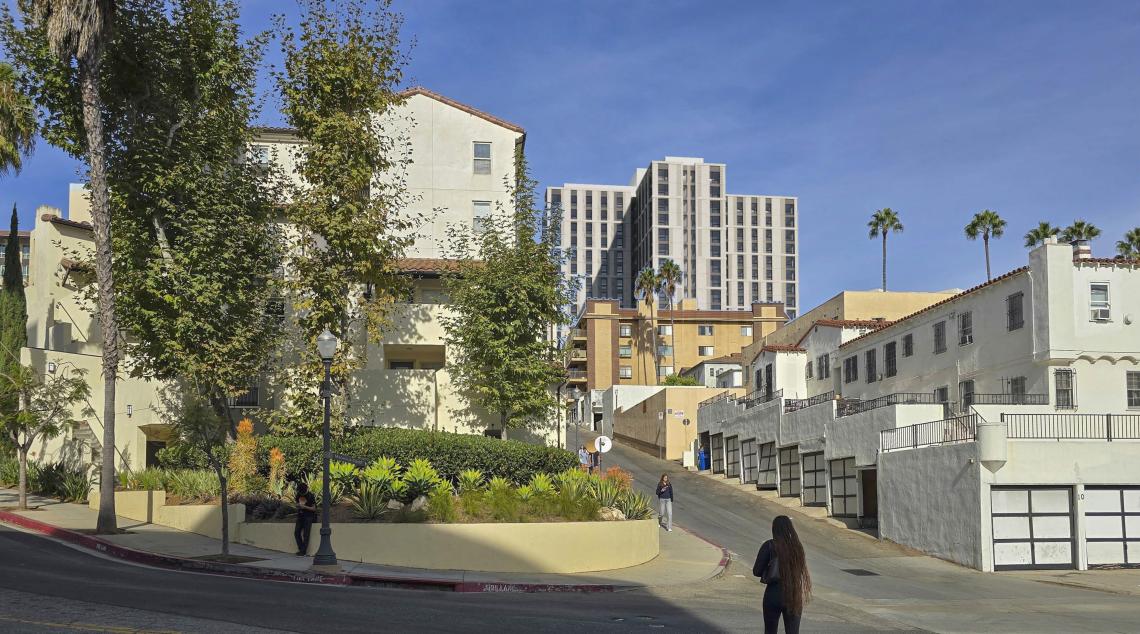Permit delays feel small at first. A week here, two weeks there. Yet in Los Angeles, even a short delay can create real stress for homeowners and developers. Construction costs rise. Loan interest keeps adding up. Crews sit idle. And the entire project drifts into a longer timeline than expected.
Table of Contents
ToggleLos Angeles is a busy city. The planning and building departments handle thousands of submissions. So delays happen often. That is why it helps to understand how time affects money. When you know the real cost of waiting, you can plan smarter, reduce risk, and protect your budget.
This article breaks down the impact in simple terms. You’ll see the main cost drivers, how long typical permits take, and why the process slows down. The goal is to help you make informed decisions before and during your permit journey.
Permit Delays Trend 📈
Source: City of Los Angeles Permit Office
Why Permit Delays Matter: A Simple Overview
A permit delay is more than a scheduling issue. It affects money, planning, and even relationships with contractors or tenants. Most people expect the process to run smoothly. But when it doesn’t, the effects stack up fast.
Here’s why it matters:
You spend more money holding the project.
Your contractor’s timeline shifts.
Material prices may rise during the wait.
Financing and interest keep adding up.
You lose time in the rental or resale market.
These issues hit both homeowners and developers. But the cost shows up differently for each group.
Quick Look: Who Feels the Delay Most?
| Group | Main Pain Point | Why It Matters |
|---|---|---|
| Homeowners | Higher living costs and contractor delays | You may need to stay in temporary housing longer or reschedule trades. |
| Developers | Lost revenue and rising budget pressure | Each month of delay can affect cash flow, ROI, and investor confidence. |
Even a short delay can change the project’s bottom line. And the longer it goes, the more the numbers shift.
Here is a quick breakdown of the types of costs you might face:
Visible Costs
Loan interest
Design revisions
Contractor standby fees
Storage or equipment rental
Extended temporary housing
Hidden Costs
Market timing loss
Rising material prices
Delayed rental income
Administrative rework
Stress and project fatigue
Because Los Angeles is a large and active city, projects compete for review time. That adds even more pressure to get things right the first time.
Below is a simple comparison of how delays affect different project sizes:
| Project Size | Typical Delay Impact | Financial Sensitivity |
|---|---|---|
| Small remodel | Schedule shifts, minor budget bumps | Moderate |
| ADU build | Loan interest and material escalation | High |
| New home or multi-unit | Major financing and revenue loss | Very high |
These tables help highlight a simple truth: time really is money in construction, especially in Los Angeles.
How Long Permits Typically Take in Los Angeles
Permit timelines in Los Angeles vary by project type. Some permits finish fast. Others take several rounds of plan checks and agency reviews. So it helps to start with realistic expectations.
Most homeowners expect quick approvals. However, the city planning process often runs slower than expected because of workload, review complexity, and required corrections. Developers already plan for this, but the timeframes still matter.
Below is a clear, easy-to-read table that shows average timelines:
Typical Los Angeles Permit Timelines
| Project Type | Average Timeline | Notes |
|---|---|---|
| Minor remodel (simple) | Same day to 2 weeks | Often over-the-counter if plans are complete. |
| Interior remodel (moderate) | 3–8 weeks | May need one or two plan-check cycles. |
| Home addition | 2–4 months | Structural review increases processing time. |
| ADU | 1–3 months | Timelines vary based on zoning and plan quality. |
| New single-family home | 3–6 months | Multiple agencies may be involved. |
| Multi-unit project | 6–12+ months | Larger projects face more reviews and corrections. |
These timelines are general, but they help set expectations. The biggest thing to remember is this: the first submission is everything. A complete and accurate set of plans can cut weeks from the process.
Why Timeline Estimates Change
Several factors can extend a permit’s timeline:
Missing documents or incomplete plans
Zoning or structural questions
Multiple agencies needing review
Seasonal review backlogs
Staff shortages or department workload
Code updates or new policy requirements
Even small mistakes can push a project to the next review cycle. Each cycle often takes several weeks. That is why proper planning and expert guidance help shorten delays.
The Dollar Math: How to Calculate the Cost of a Permit Delay
Permit delays feel annoying. Yet the real issue is the daily cost behind each extra week or month. Both homeowners and developers lose money during a delay, but in different ways. The good news is that the math is simple once you break it down.
This section explains the cost in two clear models. Each one shows how small delays turn into large numbers over time.

Simple Per-Day Cost Model for Homeowners
Homeowners often underestimate how expensive delays can be. You may be paying for a construction loan. You may also be living somewhere else during the work. Even small remodels carry hidden costs that grow each day.
Here is a simple way to look at it:
Add your daily loan interest.
Add your daily living or rental cost.
Add any contractor standby fees.
Add design or plan-revision costs if you need to resubmit.
Put them together. That number becomes your daily delay cost.
Example: Medium Remodel
Let’s walk through an easy example. Assume a $200,000 remodel with an 8% construction loan.
Construction loan interest: ~$44/day
Temporary housing or rent: ~$70/day
Contractor standby or rescheduling: ~$50/day
Extra design/plan revisions (spread daily): ~$5/day
Now the math:
$44 + $70 + $50 + $5 = $169/day
So even a 10-day delay costs around $1,690. A 30-day delay costs $5,070. And that is only the direct cost. Material price increases are separate.
Other Homeowner Costs to Watch
Extended dumpster or equipment rental
Storage fees for furniture
Higher insurance during extended work
Time off work for inspections or meetings
These add pressure to your budget. That is why early planning and a clean first submission matter so much.
Developer / Investor Cost Model
Developers feel delay costs on a larger scale. A project stuck in permitting can lose revenue every month. It also increases loan interest and pushes the construction schedule into a more expensive window.
Here is the basic model many developers use:
Loan interest per month
Lost rental income or delayed sales income
Rising construction costs (labor and materials)
Extended consulting, architecture, and engineering fees
Investor pressure and reduced overall ROI
The numbers can move quickly, even with small shifts.
Example: Small Multi-Unit Project
Let’s say a developer plans a 4-unit building. Expected rental income is $12,000/month for all units combined. Loan interest for land and early-stage financing is $9,000/month.
Lost rental income: $12,000/month
Loan interest: $9,000/month
Hard cost escalation (typical 0.5–1% per month): ~$4,000/month
Professional services (spread monthly): ~$1,000/month
Total estimated delay cost:
$12,000 + $9,000 + $4,000 + $1,000 = $26,000/month
A three-month delay now costs:
$78,000
For larger projects, the numbers rise even faster. A 90-day delay can shift the entire financial model and force a new budget or timeline.
Other Developer Costs to Consider
Holding costs for the land
Adjusted contractor bids after timeline shifts
Market timing loss (lower rent or lower sale value)
Pressure on lenders or investor partners
Delayed utility coordination
Extended insurance coverage
Even stable projects feel strain when delays grow. This is why experienced developers plan with wide time buffers and strong permit preparation upfront.
Permit Delay Impacts 📊
- 🏗 Construction Start Delays: 25%
- 💸 Increased Labor Costs: 15%
- 📅 Extended Project Timelines: 40%
- 📉 Investor Confidence Drops: 10%
Source: JDJ Consulting Research
Common Causes of Permit Delays in Los Angeles
Permit delays in Los Angeles rarely happen for one reason. Most delays come from small issues that stack up. Some are avoidable. Others depend on how busy the city is at the time. Understanding these causes helps you plan better and reduce risk before you submit.
Los Angeles has one of the country’s busiest building departments. So even a small mistake or missing document can push your project into the next review cycle. Each cycle adds weeks, sometimes months.
Below are the most common reasons your permit may slow down.
Incomplete or Poor Submissions
This is the number one cause of delays. Many applications arrive with missing forms, unclear drawings, or incomplete structural details.
Small gaps lead to big setbacks.
Typical issues in incomplete submissions
Missing documents or signatures
Wrong zoning details
No structural calculations
Outdated plan sheets
Conflicting notes between architectural and structural drawings
Missing energy compliance paperwork
Plan checkers send the plans back. Then you must revise and resubmit. Each round usually takes several weeks. This is why a clean first submission is the strongest way to avoid delays.
Multi-Agency Reviews and Jurisdiction Overlap
Los Angeles projects often need more than one agency to review the plans. This adds extra time because each agency works at its own pace.
Agencies that may get involved
City Planning
Public Works
Fire Department
Water and Power
Environmental review departments
Local or regional agencies depending on the site
If even one agency has questions, the entire project waits. This is common for additions, ADUs, hillside homes, and new builds.
High Volume and Backlogs at LADBS
Some delays come from simple volume. Los Angeles receives thousands of permits every month. When the workload spikes, review times can stretch far beyond the average.
This usually happens during:
Seasonal surges
Major code changes
After wildfires or storms
When staffing levels drop
Even well-prepared plans may sit in line longer during peak periods.
Policy Changes and Unexpected Events
New city rules, safety guidelines, or state laws can slow down the review process. Plan checkers often spend more time making sure every project meets the updated standards. Unexpected events also create sudden delays.
For example:
Emergency rebuilds
City budget shifts
Department reorganizations
New review procedures
These events push many projects into longer timelines, even if you did everything right.
Real Examples and Mini Case Studies
Real stories help show how permit delays affect budgets and timelines. These short case studies are based on common situations in Los Angeles. They highlight how small delays grow into larger financial pressure.

Each example is kept simple and easy to follow.
Case Study 1: ADU Delay Because of Zoning Questions
A homeowner in the Valley planned a garage-conversion ADU. The design was simple, and the contractor was ready to start. However, the first plan-check round raised zoning questions about parking and fire separation.
The plans went back to the architect. The correction round took three weeks. The resubmission took another two weeks. Then the second review took four more weeks.
In total, the delay was nine weeks.
Cost Impact
Loan interest: ~$1,000
Contractor rescheduling: ~$600
Temporary housing (family of three): ~$3,150
Architect revision fee: ~$400
Total impact: ~$5,150
Lesson
A detailed pre-check with zoning details could have avoided most of this delay. The homeowner later said the correction round felt longer than the construction itself.
Case Study 2: Multi-Unit Project Delayed by Structural Revisions
A small developer planned a four-unit build in Mid-City. The architect submitted complete plans, but the structural reviewer requested major clarifications. This included redesigning a shear wall layout and updating load calculations.
The engineering team needed three weeks to revise the plans. LADBS took five more weeks to review the updated set. The project lost two full months.
Cost Impact
Lost rental income: ~$24,000
Loan interest: ~$18,000
Price increase in materials during delay: ~$8,000
Extra engineering: ~$1,200
Total impact: ~$51,200
Lesson
Structural details carry the most weight in plan check. Early collaboration between architect and engineer often prevents major corrections later.
Hidden Costs You Might Forget
Some delay costs are not obvious at first. Yet they add up and create long-term pressure on your budget and schedule. These items often surprise both homeowners and developers.
Below are the hidden costs most people overlook.
Rising Material Prices
Construction materials rarely stay the same price for long. A delay of even a month can push your project into a higher price bracket. This affects lumber, concrete, steel, electrical parts, and plumbing supplies.
Higher Insurance Costs
When permits take longer, your project remains in an “active” phase. Insurance extensions cost extra. Homeowners may pay more for property coverage. Developers often face higher builder’s risk premiums.
Extended Storage Fees
If you bought materials early or moved belongings into storage, delays mean extra monthly fees. Storage seems inexpensive at first, but long delays turn it into a real expense.
Market Timing Loss
Real estate prices and rental rates shift quickly across Los Angeles. A delay of several months can push your project into a weaker market. This affects resale value and long-term rental income.
Extra Administrative Work
More delays mean more:
Emails
Phone calls
Plan revisions
Meetings with consultants
Re-coordination with contractors
It drains time and productivity. For developers, it also increases staff hours and overhead.
Stress and Project Fatigue
This cost is not financial, but it affects the experience. Long delays frustrate homeowners. Developers feel pressure from investors and lenders. Stress leads to rushed decisions, which can create more mistakes and more delays.
🧮 Permit Delay Cost Calculator
Estimate the financial impact of permit delays with this interactive calculator. Enter the number of delayed days and your daily project cost to see the total potential losses. This tool helps developers and property owners plan budgets, prioritize tasks, and make informed decisions to reduce delays and save money.
How to Reduce Permit Delay Risk: Practical Strategies
Permit delays are stressful. But many of them are avoidable with the right steps. A little preparation before submitting your plans can save weeks or even months later.
These strategies apply to both homeowners and developers, and they work well across most Los Angeles projects. This section walks through clear, practical steps you can use right away.
Pre-Submission Checklist: What to Prepare Before You Apply
A strong first submission is the easiest way to cut delay time. Most delays happen because something small is missing in the plan set. So it helps to slow down, review every item, and make sure the package is complete.
Here is a simple checklist to follow.
For Homeowners
Updated site plan with correct property lines
Clear floor plans and elevations
Structural notes from a licensed engineer when needed
Title 24 energy forms
Existing photos of the site
Contractor information (if selected)
Any past permits for the property
For Developers
Full architectural drawings
Structural calculations and details
Soils report (when required)
Utility connection notes
Grading plan for hillside lots
Fire/ingress requirements
All agency pre-approvals if needed
A complete package improves your chances of a smoother first review. It also reduces correction rounds, which is where most delays happen.
Work With Permit-Aware Designers and Consultants
Not every architect or designer has deep experience with LADBS. Los Angeles has specific standards, formats, and expectations. Someone who works with these rules every day produces cleaner, approval-ready plans.
A permit-aware designer helps by:
Catching errors before submittal
Using the correct LADBS formatting
Preparing notes that match city standards
Coordinating with engineers early
Keeping drawings consistent across sheets
This step alone can save several weeks of back-and-forth.
Use Counter Plan Check and ECPC When Possible
Some projects qualify for a faster review option. LADBS offers services like counter plan check and expanded counter plan check (ECPC). These options allow certain plans to be reviewed in one sitting instead of waiting weeks.
These services work best for:
Small additions
Interior remodels
Some ADUs
Minor structural changes
Simple residential projects
However, not every project qualifies. Your designer or consultant can check this before submission. If your project fits, this can cut a multi-week wait down to a single day.
Consider Phased Permitting
Phased permitting allows you to start certain parts of the project sooner. For example, you can submit for a foundation permit first, then submit the full building plan later.
This helps when:
You want to move dirt early
The project has long lead times
Structural engineering is still in progress
Financing benefits from early movement
It does not shorten total review time, but it shortens the time before work begins.
Coordinate Early With Inspectors and Plan Checkers
Clear communication helps. A quick conversation or email to clarify a correction note can save days. Inspectors also appreciate early coordination because it reduces last-minute surprises.
Good communication also helps prevent:
Failed inspections
Revisions late in the project
Scheduling conflicts
Extra site visits
A small effort early gives you fewer problems later.
When to Consider a Permit Expeditor
Not every project needs an expeditor. But complex projects often benefit from one. An expeditor handles the coordination between you and the city. They track your project, catch issues, and push the process forward.

You may want an expeditor if:
Your project involves multiple agencies
You are on a strict schedule
You have past corrections or complications
You have a hillside or multi-unit project
You want faster communication with LADBS
Expeditors charge fees, but many homeowners and developers find the cost worth it when facing strict deadlines.
How Time Impacts Project Costs (Direct, Indirect, and Hidden Costs)
Permit delays hurt more than just your schedule. They slowly increase your overall project budget through several cost layers. Some of these costs are obvious. Others appear later and catch developers off guard. Below is a simple breakdown.
Direct Financial Impact (Material, Labor, Carrying Costs)
Direct costs are the easiest to track because you can see them rise in real time.
Common direct cost increases include:
Labor crews waiting on approvals
Material price hikes due to supply fluctuations
Equipment rentals extended for weeks or months
Higher carrying costs on loans and credit
Even a short delay can squeeze your margins. For example, a typical framing crew cannot sit idle. When permits stall, you may still need to pay partial rates or reschedule them at a higher rate later.
Table 2: Common Direct Costs Developers Face During Permit Delays
| Cost Type | How It Increases | Real-World Example |
|---|---|---|
| Labor costs | Workers wait for approvals or must be rebooked | Rescheduling a crew adds extra fees |
| Material prices | Prices rise month to month | Lumber spikes during delay period |
| Equipment rentals | Longer rental periods | Crane rentals charged daily |
| Loan interest | More months added to financing | Hold time extends construction loan |
These are predictable but heavy expenses. They scale with every extra week of delay.
Indirect Cost Impact (Extended Timelines and Revenue Delays)
Indirect costs are not always listed on spreadsheets. However, they affect both short-term cash flow and long-term profitability.
Typical indirect impacts include:
A longer schedule pushes your full build-out
Completion dates shift into slower leasing or selling seasons
Revenue predictions become unstable
Investor confidence can weaken
Future funding becomes harder to secure
These costs are subtle. But they matter just as much as direct costs because they reduce your project’s financial health over time.
A delayed foundation inspection today could push your market launch into the next quarter. If that quarter has weaker buyer activity, your expected profit shrinks even though construction quality remains the same.
Hidden Costs Most Developers Don’t Track
Hidden costs are the expenses that most builders and homeowners never expect. They show up late in the project and can cause major stress.
Frequent hidden cost triggers include:
Multiple design revisions requested by reviewers
Re-submittal fees for updated documents
Additional consultant hours
Lost time due to staff turnover inside agencies
Higher insurance premiums
Temporary housing for displaced homeowners
These costs are difficult to plan for. Yet they often add thousands of dollars to a project, especially when the delay stretches past 60 or 90 days.
Permit Approval Duration Distribution ⏱
Source: City of Los Angeles Permit Office
Ready to Minimize Permit Delays?
Book a Free ConsultationSchedule your consultation today with JDJ Consulting experts.
Emotional and Practical Strain on Homeowners and Developers
Permit delays do more than raise costs. They also drain energy, time, and focus. Both homeowners and developers feel this strain, but in different ways. The stress builds because the timeline becomes uncertain, and every small delay pushes the project further out.
Stress and Uncertainty for Homeowners
Homeowners often enter a project with excitement. They imagine the final result — a new kitchen, a second-story addition, or a complete remodel. But when delays hit, that excitement turns into worry.
Common stress points for homeowners include:
Living in a construction zone for longer than planned
Adjusting personal routines around unfinished spaces
Paying for temporary housing
Managing family schedules during prolonged work
Feeling anxious about money and rising project costs
Even small delays can disrupt daily life. A simple two-week setback may force a family to stretch their savings or extend their rental arrangements. This creates real frustration because the homeowner has little control over the approval timeline.
Developer Pressure to Meet Deadlines and Maintain Cash Flow
Developers face a different kind of pressure. Their concern is not only the stress of uncertainty, but also the need to keep multiple projects moving at once. When one permit stalls, it affects everything else on the schedule.
Developers often juggle:
Investor expectations
Subcontractor coordination
Strict construction windows
Overlapping project timelines
Loan repayment schedules
Because of this, any delay can damage cash flow. A stalled permit may also pull attention away from other active projects. This creates a ripple effect that spreads across the entire operation.
The emotional strain grows because developers must answer to many stakeholders. They often deal with calls, emails, and constant updates, all while waiting for a city department to respond.
How Delays Disrupt Daily Routines and Business Operations
Both homeowners and developers experience daily disruptions when a project sits on hold.
Typical disruptions include:
Rescheduling crews
Storing materials longer than expected
Reapplying for time-sensitive approvals
Delaying inspections
Holding off on ordering appliances or fixtures
Adjusting internal workflow schedules
These small changes stack up. Each one may feel manageable, but together they can derail a project’s momentum. Delays also make it harder for businesses to plan ahead. When timelines shift unexpectedly, budgets, team assignments, and deliveries must all be adjusted.
Why Los Angeles Faces High Permit Delays Compared to Other Cities
Permit delays in Los Angeles are more common than in many other U.S. cities. Several factors combine to create longer timelines and higher costs. Understanding these reasons helps homeowners and developers plan more effectively.

High Volume of Applications
Los Angeles is one of the largest cities in the country. The LADBS (Los Angeles Department of Building and Safety) receives thousands of permit applications each month.
High volume means:
Longer queues for plan check
More competition for inspector time
Seasonal spikes can slow everything further
Even well-prepared plans can sit for weeks due to sheer workload.
Complex Zoning and Regulations
LA has hundreds of zoning districts, overlay zones, and special design requirements.
This complexity results in:
Multiple agencies reviewing the same project
Additional environmental, fire, and grading approvals
More rounds of corrections if plans are incomplete
The same project in a smaller city might get approved in a single review. In LA, it often requires coordination between multiple departments.
Backlogs and Staffing Shortages
Permit reviews depend on city staff.
Sometimes, delays happen because:
Departments are understaffed
Reviewers take vacation or training
Sudden surges in permit applications create backlogs
Even simple corrections can be delayed for weeks when reviewers are busy.
Policy Changes and Emergency Rebuilds
Los Angeles frequently updates building codes and regulations.
Other factors include:
Emergency rebuilds after wildfires or floods
New energy efficiency standards
Updated zoning or safety rules
These changes may require extra review, slowing down current applications.
Comparison with Other Cities
| City | Average Residential Permit Timeline | Notes |
|---|---|---|
| Los Angeles, CA | 3–6 months (home addition) | Multiple agencies, high volume |
| Austin, TX | 4–8 weeks | Streamlined review for residential projects |
| Phoenix, AZ | 3–6 weeks | Fewer agencies involved |
| Denver, CO | 2–4 months | Moderate complexity, less volume |
As this table shows, LA projects often take longer because of complexity, volume, and city-specific requirements.
Checklist for Homeowners and Developers Before You Submit
Preparation is the key to avoiding permit delays. A well-prepared submission reduces the chance of corrections and speeds up approval. Below is a simple checklist for homeowners and developers to follow before applying for any permit in Los Angeles.
Homeowner Checklist
Confirm property lines and zoning compliance
Prepare complete architectural drawings and floor plans
Include structural calculations if required
Submit Title 24 energy compliance forms
Attach site photos and any prior permits
Confirm contractor or builder information
Review all forms for signatures and dates
Double-check minor details like window sizes and setbacks
Following this checklist ensures your submission is clean and complete. Even small errors can add weeks of delay.
Developer Checklist
Submit full architectural and structural plans
Include engineering reports (soils, foundation, grading)
Obtain utility approvals (water, electricity, gas)
Address fire and access requirements early
Verify environmental or CEQA requirements
Coordinate with all applicable city departments
Double-check plans for consistency and formatting
Prepare contingency budget for unexpected revisions
Developers often face multiple agencies simultaneously. This checklist keeps all items organized and reduces back-and-forth with reviewers.
Tips for Both Homeowners and Developers
Schedule pre-submission meetings with your architect or expeditor
Factor extra time into your project timeline
Maintain a digital copy of every document
Review deadlines and response timelines for each agency
Keep a small contingency budget for corrections or resubmissions
By completing this checklist, you give your project the best chance for a smooth approval. It also helps manage expectations for costs and timing.
Sample Communication & Budget Template (Ready to Copy)
Having a plan for communication and budgeting can make permit delays more manageable. When delays happen, clear documentation keeps everyone on track. Below are sample templates you can adapt for your project.
Sample Communication Template to Architect/Expeditor
Subject: Review of Permit Submission Before Resubmission
Hi [Architect/Expeditor Name],
I wanted to confirm that our permit submission package is complete before resubmitting to LADBS.
Please review the following:
Architectural and structural drawings
Site and grading plans
Energy compliance forms (Title 24)
Utility and fire approvals
Could you also identify any potential zoning or code conflicts we should address early?
Please send me your feedback by [insert date] so we can submit on time.
Thank you,
[Your Name]
[Contact Information]
Sample Budget Template for Tracking Delay Costs
| Cost Category | Estimated Daily Cost | Actual Days Delayed | Total Cost |
|---|---|---|---|
| Loan Interest | $50 | 10 | $500 |
| Temporary Housing | $70 | 10 | $700 |
| Contractor Standby | $50 | 10 | $500 |
| Plan Revisions | $10 | 2 | $20 |
| Material Escalation | $30 | 10 | $300 |
Notes:
Update this table weekly to reflect any changes.
Adjust numbers for your specific project costs.
Include both direct costs (loan, labor, materials) and hidden costs (insurance, storage, lost revenue).
Why Use Templates
Keeps communication professional and organized
Reduces misunderstandings with contractors or consultants
Tracks real-time costs during delays
Provides documentation for lenders or investors
Helps plan contingencies for future delays
By using simple templates, you save time and reduce stress. You also maintain a clear record for your project, which is valuable if delays extend longer than expected.
Conclusion — Time is Money: Plan Permit Strategy Early
Permit delays in Los Angeles are common, but they don’t have to derail your project. Understanding the causes, timelines, and costs helps both homeowners and developers plan smarter.
Key takeaways:
Plan thoroughly before submission. A complete, accurate package reduces review cycles.
Work with experienced designers or permit consultants. They know LADBS expectations.
Consider counter plan check, phased permitting, or expeditors for complex projects.
Track costs and communication. Even small delays add up quickly.
Budget for contingencies. Factor in hidden costs, material escalation, and loan interest.
Every week counts. Time delays translate into real dollars, stress, and project disruption. By acting early and following a structured approach, you can minimize delays and control costs.
Take Action Today
At JDJ Consulting, we help homeowners and developers navigate Los Angeles permitting efficiently. Our experts review your project, identify potential roadblocks, and guide you through submission strategies that save time and money.
Contact us today for a personalized consultation:
- (818) 793-5058
- Schedule a Free Consultation
Don’t let permit delays derail your project. Start planning smart, save time, and protect your investment.






